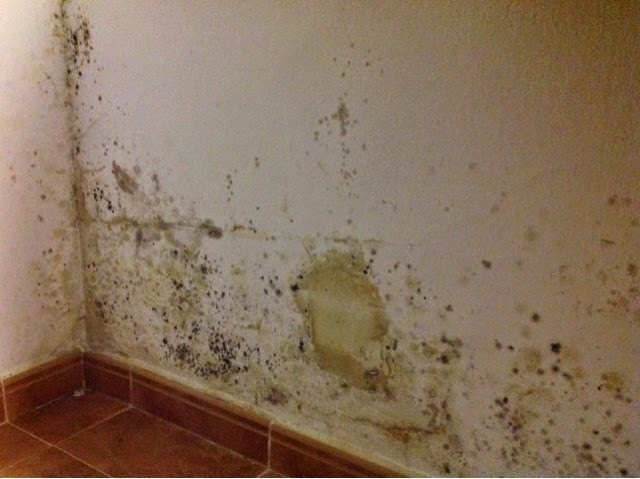IS MOLD DANGEROUS?
In most cases, it is just a frustrating cleaning obstacle. If left untreated, mold can damage walls, furniture, and any items left in outdoor storage (especially cloth items like strollers, car seats, military gear, or clothing). HOWEVER... Some people, especially children, are sensitive to mold and can become sick from inhaling the spores. If you or a family member experience breathing problems, coughing, or frequent illness, it could be caused by mold in your house. If you have a pre-diagnosed condition like asthma, mold can really affect your health and quality of life.
TYPES OF MOLD AND TREATMENT:
There are several types to watch out for. All can cause damage and sickness, and all should be treated immediately.
MILDEW or BLACK MOLD is mold that appears as small dark spots, usually on cloth or material. In the Bible, Jews were required to throw away material with this mold on it, because there was no way to kill it. Now we know that a mixture of bleach and water can be used to scrub mildew off items like strollers. But bleach will damage clothing, and mildew cannot be washed out in a regular wash cycle, so if you find mildew on regular clothes or laundry, you may still need to throw them away. Mildew will also appear around doors and windows without much sunlight or circulation.
GREEN MOLD is the fuzzy kind that most people are familiar with. It thrives in damp, dark environments, so check the back of couches occasionally, and any containers or boxes that are in outdoor storage areas. It can be wiped off with Clorox wipes, or sprayed with a bleach/water solution.
WHITE MOLD can grow underneath plaster on concrete walls, or even in between tiles in bathrooms. It can be hard to spot on white plaster or white grout, but you will notice areas where the plaster on the walls cracks, peels, or falls off. This can also be treated with a bleach-water solution, but the loose plaster must first be removed, then the whole area should be cleaned with bleach, allowed to dry, and resealed and repainted.
MOLD PREVENTION:
- Sunlight kills mold, so try to open curtains and blinds during the day.
- dry air prevents mold, so if you live on base, turn on the de-humidifier in your HVAC closet. If you live off base, you can get a de-humidifier from the base Self Help center. In either case, remember to check the de-humidifier tray frequently, and be sure to empty it when it gets full.
- open a window when taking a shower, so the steam moisture won't remain in the bathroom
- keep furniture like beds and couches a few inches off the wall, so the moisture from the plaster won't transfer to your furniture and let mold grow there.



This comment has been removed by the author.
ReplyDeleteWe are a family owned and operated company that cares about family values.
ReplyDeleteThat’s why we use 100% organic, non-toxic products to ensure the safety of your home.
Our patented anti-mould formula kills all spores and micro-organisms on contact and prevents them from ever returning.